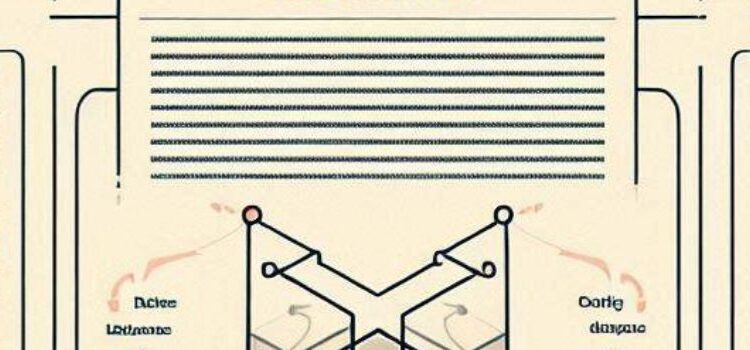Writing Clear and Concise Conclusions in Scientific Writing
The conclusion represents the culmination of the intellectual effort invested in a research project. It is the final opportunity to leave a lasting impression on the reader and, as such, must be clear, precise, and consistent with the study’s objectives and findings. In scientific writing, the conclusion is not merely a summary of results; it is a critical synthesis that articulates the relevance of the research, its theoretical and practical implications, and potential directions for future studies.
The Role of the Conclusion in Scientific Texts
Unlike other discursive genres, the conclusion in a scientific article serves specific purposes. It not only closes the argumentative cycle that began in the introduction but also articulates the study’s contribution to existing knowledge. It should address the research questions, connect the findings to the theoretical framework, and highlight their relevance. In this sense, a well-crafted conclusion can significantly enhance the perception of the study’s rigor and originality.
Conceptual and Structural Clarity
One of the most common mistakes in writing conclusions is conceptual ambiguity. When statements are not clearly defined or new ideas are introduced without prior development, coherence is lost. Conceptual clarity requires the use of direct language, the avoidance of unnecessary jargon, and a logical argumentative flow aligned with the study’s goals.
Structurally, an effective conclusion should follow a logical progression. It begins by briefly reaffirming the main findings, then establishes their relationship to the theoretical framework, and finally offers a critical reflection on the scope and limitations of the study. This structure enables the reader to understand not only what was discovered but also why it matters.
Conciseness Without Superficiality
Conciseness should not be mistaken for superficiality. Being concise means carefully selecting the most relevant information and expressing it with economy of language. A common pitfall is to extend the conclusion with redundant phrases or vague statements that add little value. The key is to condense essential information without omitting meaningful elements.
One useful strategy is to write a first draft freely and then engage in a rigorous editing process to eliminate redundancies, clarify terms, and ensure argumentative precision. This approach not only improves the text’s readability but also conveys an image of academic rigor.
The Scientific Voice in the Conclusion
Scientific writing requires an objective and argumentative voice. In the conclusion, this voice should be preserved by avoiding emotional judgments, unsupported categorical statements, or personal opinions lacking empirical grounding. However, this does not imply total neutrality; the author can adopt a critical stance toward the results and suggest future directions, as long as they are grounded in solid reasoning.
A strong conclusion may also propose future research avenues, but such suggestions should be measured and based on gaps identified throughout the study. This demonstrates a researcher committed to disciplinary development and aware of the inherent limitations of all research.
The Importance of Disciplinary Context
Conclusion writing also varies by discipline. In the social sciences, for example, greater emphasis is placed on the social and theoretical implications of the findings, while in the natural sciences, the focus is often on reproducibility, data precision, and practical applications. Therefore, understanding the rhetorical conventions of one’s field is essential for crafting relevant and persuasive conclusions.
Additionally, in interdisciplinary research, it is advisable to craft a closing section that engages with multiple theoretical perspectives, showing how the study contributes to various lines of thought. This rhetorical skill not only enriches the text but also enhances its potential for impact and citation.
The conclusion is far more than a formal closing statement—it is an argumentative construction that demands as much attention and care as any other section of the text. Its clarity, coherence, and capacity for synthesis are key indicators of the author’s academic maturity. Writing clear and concise conclusions is not a mechanical act, but rather an exercise in critical reflection that encapsulates the value of the research conducted.
References
- Day, R. A., & Gastel, B. (2016). How to write and publish a scientific paper (8th ed.). Cambridge University Press.
- Swales, J. M., & Feak, C. B. (2012). Academic writing for graduate students: Essential tasks and skills (3rd ed.). University of Michigan Press.
- Hartley, J. (2008). Academic writing and publishing: A practical guide. Routledge.
- Paltridge, B., & Starfield, S. (2016). Getting published in academic journals: Navigating the publication process. University of Michigan Press.
Redacción de conclusiones claras y concisas en la escritura científica
La conclusión representa la culminación del esfuerzo intelectual invertido en una investigación. Es la última oportunidad para dejar una impresión duradera en el lector y, por tanto, debe ser clara, precisa y congruente con los objetivos y resultados del estudio. En la escritura científica, la conclusión no es un mero resumen de los hallazgos; es una síntesis crítica que articula la relevancia del estudio, sus implicaciones teóricas y prácticas, y las posibles líneas futuras de investigación.
El papel de la conclusión en el texto científico
A diferencia de otros géneros discursivos, en el artículo científico la conclusión cumple funciones específicas. No sólo cierra el ciclo argumentativo iniciado en la introducción, sino que también articula el aporte del estudio al conocimiento existente. Debe resolver las preguntas de investigación, conectar los hallazgos con el marco teórico y evidenciar su relevancia. En este sentido, una conclusión bien escrita tiene el potencial de fortalecer la percepción de solidez y originalidad del trabajo.
Claridad conceptual y estructural
Uno de los errores frecuentes en la redacción de conclusiones es la ambigüedad conceptual. Cuando no se delimitan con precisión las afirmaciones o se introducen ideas nuevas que no fueron desarrolladas previamente, se pierde coherencia. La claridad conceptual implica utilizar un lenguaje directo, evitar tecnicismos innecesarios y mantener una línea argumentativa alineada con los objetivos del estudio.
En términos estructurales, una conclusión efectiva debe mantener una progresión lógica. Comienza reafirmando brevemente los principales hallazgos, luego establece su relación con el marco teórico y concluye con una reflexión crítica sobre su alcance y limitaciones. Este desarrollo permite que el lector comprenda no solo lo que se descubrió, sino también por qué es importante.
Concisión sin superficialidad
La concisión no debe confundirse con superficialidad. Ser conciso implica seleccionar cuidadosamente la información más relevante y expresarla con economía de palabras. Un error común es extender la conclusión con repeticiones innecesarias o con afirmaciones vagas que no agregan valor. La clave está en condensar la información esencial sin omitir elementos significativos.
Una estrategia útil es redactar un primer borrador libremente y luego realizar un proceso riguroso de edición, en el que se eliminen redundancias, se clarifiquen términos y se asegure la precisión argumentativa. Este enfoque no sólo mejora la legibilidad del texto, sino que también transmite una imagen de rigor académico.
La voz científica en la conclusión
La redacción científica exige una voz objetiva y argumentativa. En la conclusión, esta voz debe mantenerse, evitando juicios emocionales, afirmaciones categóricas no sustentadas o apreciaciones personales sin respaldo empírico. No obstante, esto no implica neutralidad absoluta; el autor puede posicionarse críticamente respecto a los resultados y sugerir caminos futuros, siempre desde una base argumentativa sólida.
En este sentido, una buena conclusión puede también contener propuestas para futuras investigaciones, pero deben estar formuladas con mesura y sustentadas en los vacíos detectados a lo largo del estudio. Esto proyecta una imagen de autor comprometido con el desarrollo disciplinar y consciente de las limitaciones inherentes a toda investigación.
La importancia del contexto disciplinar
La redacción de conclusiones también varía según la disciplina. En las ciencias sociales, por ejemplo, se valoran más las implicaciones sociales y teóricas de los resultados, mientras que en las ciencias naturales se enfatiza la reproducibilidad, la precisión de los datos y las aplicaciones prácticas. Por ello, es crucial conocer las convenciones retóricas de cada campo para construir conclusiones pertinentes y persuasivas.
Asimismo, en disciplinas interdisciplinarias, es recomendable construir un cierre que dialogue con diferentes perspectivas teóricas, mostrando cómo el estudio contribuye a varias líneas de pensamiento. Esta habilidad retórica no sólo enriquece el texto, sino que aumenta su potencial de impacto y citación. La conclusión es mucho más que una fórmula de cierre: es una construcción argumentativa que requiere tanta atención y cuidado como cualquier otra sección del texto. Su claridad, coherencia y capacidad de síntesis son indicadores clave de la madurez académica del autor. Redactar conclusiones claras y concisas no es un acto mecánico, sino un ejercicio de reflexión crítica que sintetiza el valor de la investigación realizada.

